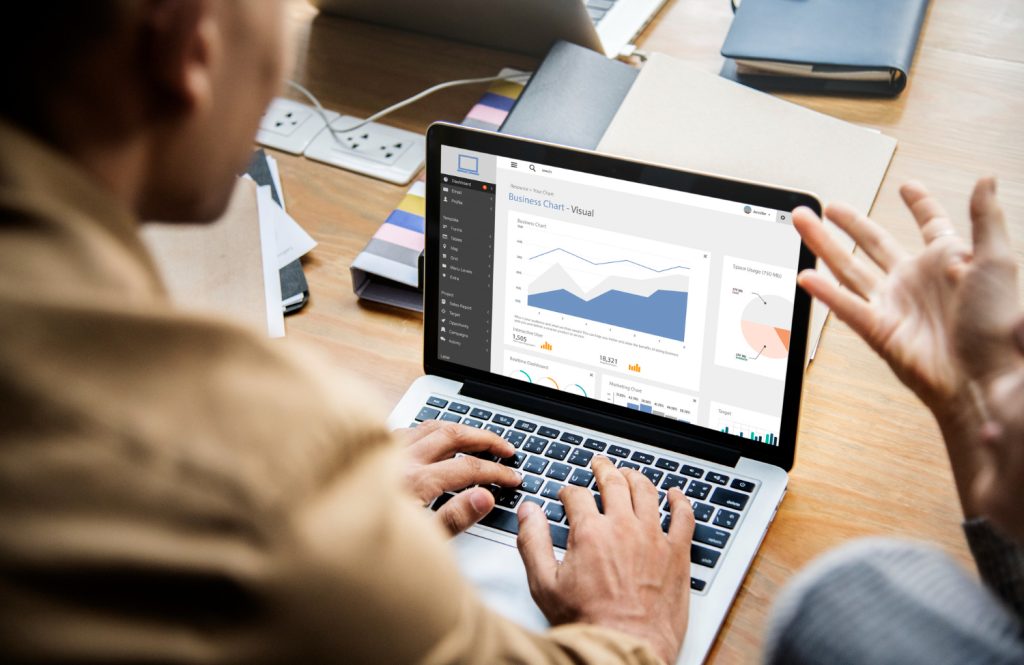Marketing is undeniably a critical function for any business, particularly for those in the growth phase. On one hand, traditional advertising focuses on creating brand awareness and driving indirect results; on the other hand, performance marketing introduces a newer, highly effective approach that ensures measurable outcomes. By enabling brands to pay only for achieved actions—such as clicks, leads, or conversions—performance marketing not only redefines efficiency but also offers a cost-effective and data-driven method for scaling growth seamlessly.
For growing brands, performance marketing is not just a tool but a strategy that drives measurable results, optimizes budget allocation, and provides real-time feedback. This blog explores the importance of performance marketing, how it works, and why it is indispensable for a brand’s expansion.
What Is Performance Marketing?
The first question that comes to mind is, What is performance marketing? To put it simply, performance marketing refers to digital advertising strategies that focus on achieving specific actions or outcomes. Unlike traditional marketing—where payment is made for exposure, such as a billboard or TV ad—performance marketing stands out by charging businesses only for tangible results. This fundamental difference makes performance marketing highly efficient and outcome-oriented.
Performance marketing campaigns are typically run through digital channels like:
- Search Engine Marketing (SEM): Paid advertising on platforms like Google and Bing.
- Social Media Ads: Campaigns on platforms such as Facebook, Instagram, LinkedIn, and TikTok.
- Affiliate Marketing: Partnering with publishers, influencers, or websites to promote products or services.
- Programmatic Advertising: Automated buying of ads in real-time, targeting specific audiences.
- Native Advertising: Blending ads seamlessly with the platform’s content, such as sponsored articles.
This pay-for-performance model ensures that businesses only spend on strategies that directly contribute to their objectives
Why Growing Brands Need Performance Marketing

1. Cost-Efficiency and Budget Optimization
For a growing business, managing finances is absolutely crucial. Consequently, performance marketing plays a vital role by enabling brands to allocate resources effectively, as it ensures they pay only for measurable results. As a result, this approach guarantees that the marketing budget delivers a high return on investment (ROI).
For example, instead of spending a fixed amount on a TV ad campaign with uncertain outcomes, a performance marketing strategy ensures payments are tied to clicks, sign-ups, or purchas
2. Real-Time Data Insights
Performance marketing thrives on data, and real-time analytics allow brands to monitor the effectiveness of their campaigns. Tools like Google Analytics, Facebook Ads Manager, and marketing automation platforms offer deep insights into:
- User demographics
- Behavior patterns
- Campaign performance metrics
This continuous flow of data empowers marketers to tweak campaigns effectively, optimize targeting precisely, and ultimately improve outcomes mid-campaign, thereby ensuring better results without incurring additional expenses.
3. Precision Targeting
- Demographics: Age, gender, and income
- Psychographics: Interests, attitudes, and values
- Behavioral data: Past purchases or online interactions
This precision targeting, therefore, ensures that marketing messages resonate effectively with the audience most likely to convert.
4. Scalability
One of the most significant advantages of performance marketing is its scalability. Campaigns can easily be scaled up or down based on performance, audience demand, or budget availability. This scalability ensures that growing brands can adapt their strategies as they expand.
5. High ROI and Accountability
Performance marketing inherently focuses on generating high ROI. Moreover, its pay-per-action model ensures accountability by directly linking expenditures to results. Consequently, this clarity makes it much easier for businesses to evaluate which campaigns are worth investing in and which ones require adjustment or termination.
6. Omnichannel Presence
Performance marketing doesn’t limit brands to a single platform. Instead, it provides the flexibility to target audiences across multiple touchpoints. For example:
- A consumer might discover a brand through a Google ad.
- They might see a retargeted ad on Instagram later.
- Finally, they could make a purchase through an affiliate link.
This omnichannel approach, therefore, ensures a consistent and engaging brand presence throughout the buyer’s journey.
Key Benefits of Performance Marketing

1. Measurability
The success of traditional marketing campaigns often hinges on qualitative factors like brand awareness or reach, which are harder to measure. In contrast, performance marketing offers tangible metrics like:
- Cost-Per-Click (CPC): The amount paid for each click on an ad.
- Conversion Rates: The percentage of users who take a desired action.
- Return on Ad Spend (ROAS): The revenue generated for every dollar spent on advertising.
These metrics make it easier to assess campaign success and optimize for better results.
2. Personalization
Consumers expect personalized experiences. Performance marketing leverages customer data to craft tailored messages, ensuring higher engagement. For example:
- A user searching for “running shoes” might see ads for specific shoe brands or stores nearby.
- Retargeting ads could remind them of items they viewed but didn’t purchase.
This level of customization builds stronger connections with the audience.
3. Transparency
Performance marketing provides brands with clear visibility into how their campaigns are performing. Consequently, this transparency ensures that businesses can track every dollar spent, easily identify underperforming areas, and efficiently adjust strategies as needed.
4. Adaptability
Digital marketing environments are constantly changing. Performance marketing allows brands to adapt quickly to new trends, algorithms, or shifts in consumer behavior. For example:
-
If a specific ad isn’t performing well, brands can, therefore, A/B test new creatives to identify which variations resonate best with their audience.
- Marketing budgets can, therefore, be reallocated to high-performing channels without interrupting the overall strategy. This flexibility ensures that resources are always directed toward the most effective avenues for growth, optimizing performance while maintaining a cohesive campaign.
5. Brand Visibility and Awareness
While performance marketing primarily focuses on measurable results, it also significantly contributes to increasing brand visibility. In fact, the more targeted ads users see, the more familiar they become with the brand, even if they don’t immediately convert. Consequently, this repeated exposure helps lay the groundwork for future sales and builds long-term brand recognition.
How to Build a Successful Performance Marketing Strategy

1. Set Clear Objectives
Before launching any campaign, establish specific, measurable goals. These might include:
- Driving 10,000 website visits in a month.
- Generating 500 leads from a campaign.
- Achieving a 20% increase in e-commerce sales.
Clear objectives, therefore, ensure that every aspect of the campaign is aligned toward achieving defined outcomes.
2. Research Your Audience
Understanding your audience is absolutely critical to performance marketing success. Therefore, you should use tools like Google Trends, Facebook Audience Insights, and customer surveys to gather comprehensive data about your target market. As a result, the better you understand their preferences, the more effectively you can tailor your campaigns to meet their needs.
3. Leverage Retargeting
Retargeting is one of the most powerful tools in performance marketing. It allows brands to re-engage users who’ve interacted with their website or ads but didn’t convert. For example:
-
A user who abandons their shopping cart, for instance, might later see an ad offering a discount on the product they left behind. This targeted retargeting strategy helps re-engage potential customers and encourages them to complete their purchase.
4. Optimize Your Creatives
- Visually appealing
- Aligned with brand messaging
- Tailored to resonate with your audience
5. Focus on High-Converting Channels
Not all platforms work for every brand. For instance:
- LinkedIn: Ideal for B2B and professional audiences.
- Instagram and TikTok: Perfect for visual and lifestyle-oriented brands targeting younger demographics.
- Google Ads: Effective for intent-driven searches.
Therefore, focus your efforts on the channels that align best with your audience and goals.
6. Monitor and Optimize
Performance marketing is a continuous process. Regularly review campaign data to identify what’s working and what isn’t. Use insights to make data-driven decisions that improve efficiency and maximize ROI.
Real-Life Success Stories
1. Airbnb
Airbnb used performance marketing to grow its platform globally. By running search ads targeting travelers looking for unique accommodations and retargeting users who abandoned bookings, the brand increased conversions and achieved rapid growth.
2. Dollar Shave Club
Dollar Shave Club disrupted the razor industry with a direct-to-consumer model. Through performance-driven campaigns across social media and affiliate marketing, the brand scaled rapidly and was acquired by Unilever for $1 billion.
Challenges in Performance Marketing
1. Rising Costs
As more brands adopt digital advertising, competition increases, driving up costs. To mitigate this, focus on improving your campaigns’ relevance, using long-tail keywords, and exploring emerging platforms.
2. Privacy Regulations
Laws like GDPR and CCPA restrict data collection, making it harder to track user behavior. Ensure compliance by being transparent about data usage and adopting ethical marketing practices.
3. Ad Fatigue
Overexposure to the same ads can reduce audience engagement. Rotate your creatives and experiment with new formats to keep your campaigns fresh and engaging.
The Future of Performance Marketing
Performance marketing will continue to evolve with advancements in technology and changing consumer behaviors. Key trends shaping the future include:
- AI-Driven Optimization: AI-powered tools can predict trends, automate bidding, and optimize creatives in real-time.
- Voice Search Advertising: As voice search becomes more prevalent, brands must adapt their campaigns to capture these opportunities.
- Interactive Ads: Gamified and interactive ads will play a larger role in engaging users.
Conclusion
Performance marketing is not just a buzzword; it’s a proven, result-oriented approach that empowers growing brands to achieve their goals. With its focus on measurable outcomes, cost-efficiency, and adaptability, performance marketing offers a clear path to scalability and long-term success.
For growing brands, the ability to target specific audiences, optimize campaigns in real time, and measure results down to the smallest detail ensures that every dollar spent contributes directly to their growth objectives. Whether through search engine ads, social media campaigns, affiliate partnerships, or programmatic advertising, performance marketing provides the tools and strategies needed to stand out in a competitive landscape.
To make the most of performance marketing, brands must invest in high-quality creatives, leverage data for informed decision-making, and continuously refine their strategies. With the right approach, performance marketing can not only drive immediate results but also build a strong foundation for sustainable growth.
Ready to elevate your marketing efforts? Check out the Performance Marketing Course to learn cutting-edge techniques and strategies. Equip yourself with the skills to create impactful campaigns that drive measurable results and help your brand thrive in today’s fast-paced digital ecosystem.
